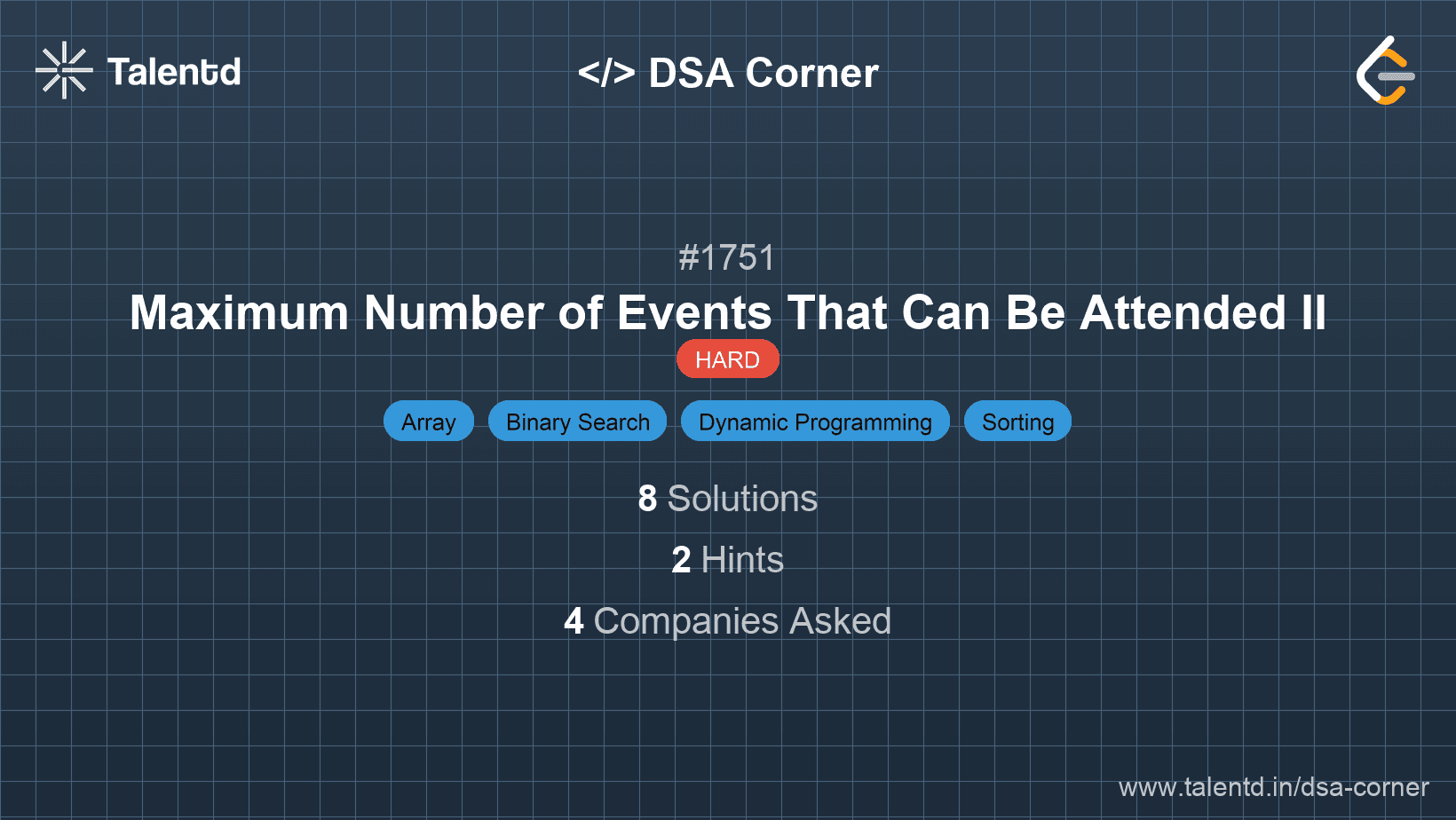
Sponsored
Sponsored
To tackle the problem efficiently, we can use a variant of the Dynamic Programming approach combined with Binary Search. The idea is to sort events by their end times, which helps in handling overlapping issues. Once sorted, for each event, we compute two scenarios: attending the event and not attending. We also use binary search to identify the last non-overlapping event when including the current one. We arrange these scenarios into a DP table where dp[i][j] represents the maximum value we can obtain by considering the first i events with at most j events attended.
The binary search facilitates a quick lookup of the previous event that can be attended before the current one without overlap. The overall complexity is reduced by leveraging efficient lookup using binary search in a sorted list of events' end times.
Time Complexity: O(n * k * log n), where n is the number of events. The log n factor arises from binary searching over sorted events.
Space Complexity: O(n * k) for the DP table.
1import java.util.Arrays;
2
3class Solution {
4 public int maxValue(int[][] events, int k) {
This Java implementation sorts the events array by end day and utilizes a dynamic programming matrix to find the maximum value. We calculate the latest possible non-overlapping event using a loop and maximize the event value choices in the DP table.
Another alternative approach is to make use of Greedy reasoning combined with a Sweep-Line technique. By first sorting the events based on both start and end times, we can iterate over the events to select the maximum value events that don't overlap. When we encounter a new potential starting event that fits, we check and decide to attend based on maximizing the cumulative event value without exceeding k events.
Time Complexity: O(n log n) due to sorting and heap operations.
Space Complexity: O(n) for storing events in the heap.
1import heapq
2
3class Solution
The Python solution leverages both greedy choice and a min-heap to keep track of current events such that the events do not overlap. While introducing events from the heap, it tests viability considering the constraints, particularly the start and end days.